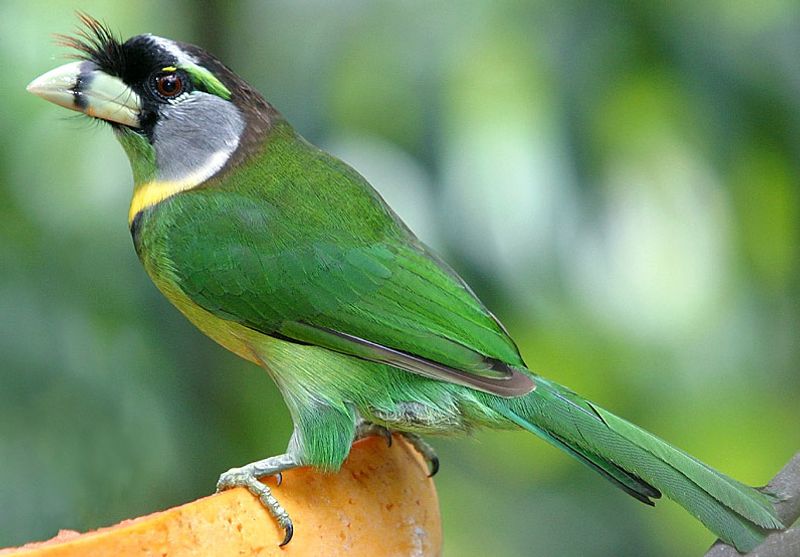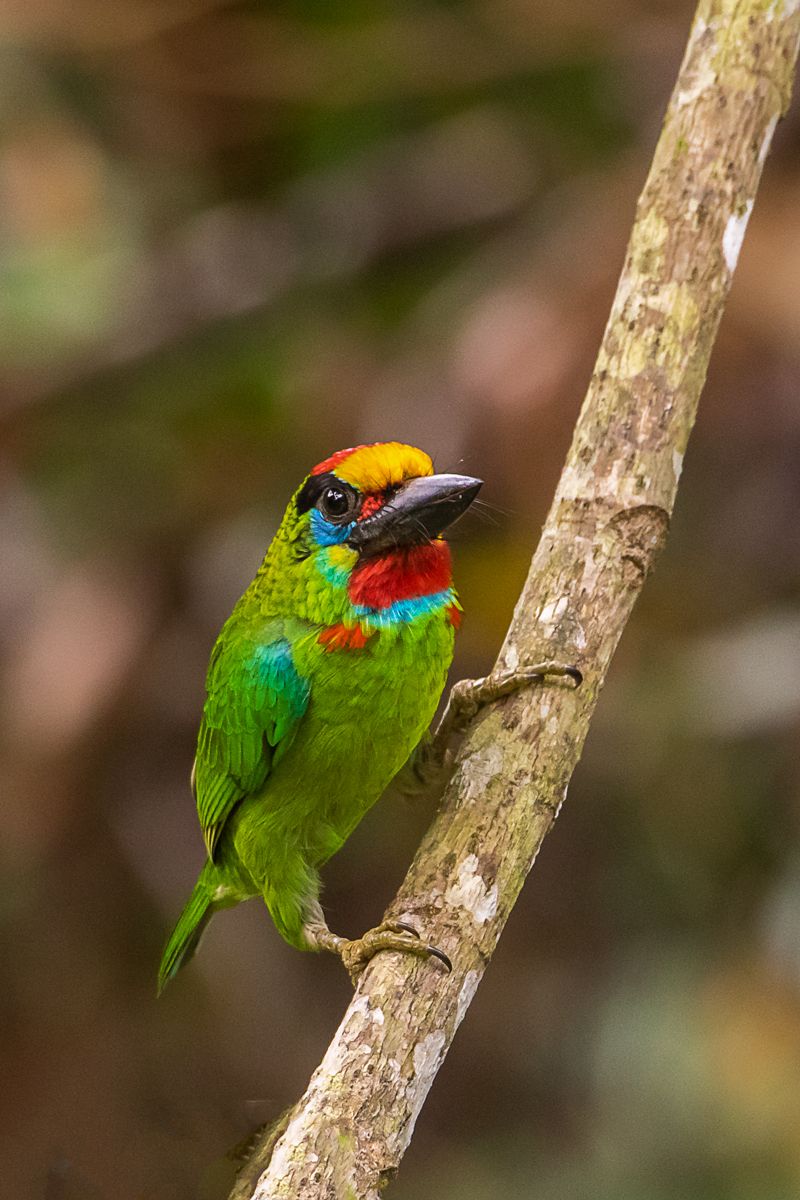Pahang, the largest state in Malaysia, is a prime destination for birdwatching enthusiasts. The lush rainforest and diverse terrain of this region provide an excellent habitat for many endemic and migratory species of birds.
From the majestic hornbills to the beautiful fairy bluebirds, Pahang offers a fantastic variety of birds to discover. Birdwatchers can explore a variety of habitats, including mangroves, swamps, lowland and hill forests, to find an array of fascinating birds.
Whether you’re a beginner or an experienced birdwatcher, Pahang is an ideal spot for an unforgettable birdwatching experience.
6 Birds to Watch in Pahang
Pahang, the largest state in Malaysia, is a prime destination for birdwatching enthusiasts. The lush rainforest and diverse terrain of this region provide an excellent habitat for many endemic and migratory species of birds.
From the majestic hornbills to the beautiful fairy bluebirds, Pahang offers a fantastic variety of birds to discover. Here are six birds that you should not miss when visiting Pahang.
1. Fire-tufted Barbet

The Fire-tufted Barbet is a bird species in the Megalaimidae family, part of the Asian Barbet family. This species is native to Peninsular Malaysia and Sumatra, where it lives in tropical moist lowland and montane forests.
The IUCN Red List, a threatened species database, has classified the Fire-tufted Barbet as “Least Concern” since 2004.
This means that while this species is vulnerable to habitat loss and other threats, its population is considered stable and not currently facing immediate endangerment or extinction. The Fire-tufted Barbet is a medium-sized bird with a total length of around 20 cm.
This species has a bright yellow head and underparts, a black throat and breast, and a distinctive red crest. The wings and tail are black, and the underside of the tail is white.
The Fire-tufted Barbet feeds mainly on fruits, berries, and insects and can be found in pairs or small family groups. This species also produces a loud, musical call, which can be heard from a great distance.
The fire-tufted barbet is an essential species in the tropical rainforest ecosystem, as it helps disperse seeds from the fruits it eats, which helps maintain the diversity of the habitat.
| Kingdom | Animalia |
| Phylum | Chordata |
| Class | Aves |
| Order | Piciformes |
| Family | Megalaimidae |
| Genus | Psilopogon |
| Species | P. pyrolophus |
2. Blue-throated Bee-eater
The blue-throated bee-eater is a fascinating bird species in much of Southeast Asia. They inhabit tropical and subtropical mangrove forests, where they typically nest in small colonies.
This species of bee-eater has a bright blue throat patch, which makes them easily distinguishable from other birds in the same family. The blue-throated bee-eater is considered an insectivore, mainly feeding on insects.
Their diet consists mainly of bees, wasps, and dragonflies, which they hunt in mid-air using their sharp beaks.
This bird species is particularly well-known for its elaborate courtship display, in which the males will fly high up into the air and perform a series of rolls and dives to attract a mate.
The blue-throated bee-eater is an essential species for local ecosystems, as it helps to control the populations of bees, wasps, and dragonflies.
Without their presence, these insects could become a nuisance and overwhelm the area. For this reason, conserving and protecting mangrove forests where blue-throated bee-eaters are found is essential.
| Kingdom | Animalia |
| Phylum | Chordata |
| Class | Aves |
| Order | Coraciiformes |
| Family | Meropidae |
| Genus | Merops |
| Species | M. viridis |
3. Bushy-crested Hornbill
The bushy-crested hornbill is a species of bird belonging to the hornbill family. It is native to Southeast Asia and is found in Brunei, Indonesia, Malaysia, Myanmar, and Thailand.
This species prefers to inhabit subtropical or tropical moist lowland forests and can be found in various habitats within those areas, including tropical rainforests, swamp forests, and mangroves. The bushy-crested hornbill is a large bird with a distinctive feature – its crest.
The crest is a tuft of feathers that stand upright on the head, giving the bird a bushy appearance. The plumage of the bushy-crested hornbill is black and white, with a pale yellow bill and yellow legs. The wings and tail are black, and the underside of the tail is white.
The bushy-crested hornbill feeds mainly on fruit but consumes small animals like insects and lizards. The bushy-crested hornbill is a monogamous species that mate with one partner for life. They form pair bonds and live in small groups.
The female builds a nest inside a tree cavity, then sealed with mud and droppings.
The male feeds the female while she incubates the eggs and takes care of the chicks once they hatch. The bushy-crested hornbill is vulnerable due to habitat destruction and illegal hunting.
However, conservation efforts have been implemented to ensure the species survive in the wild. These include protecting its natural habitat, educating on the importance of conservation, and enforcing laws against illegal hunting.
| Kingdom | Animalia |
| Phylum | Chordata |
| Class | Aves |
| Order | Bucerotiformes |
| Family | Bucerotidae |
| Genus | Anorrhinus |
| Species | A. galeritus |
4. Grey-rumped Treeswift
The grey-rumped treeswift is a species of bird belonging to the Hemiprocnidae family. This family is unique in that it is the only family in its order, Apodiformes, to contain extant species, meaning they still live today.
There are four species in the Hemiprocnidae family, with the grey-rumped treeswift being one of them. These birds are found in Southeast Asia’s tropical and subtropical regions and adjacent areas, including India, Sri Lanka, and the Philippines.
The grey-rumped treeswift is a small bird with a body length of about 20-25 cm and a wingspan of up to 40 cm. Their wings are broad and pointed, with a grey rump and a dark-tipped tail.
They typically feed on insects, spiders, and small reptiles and move quickly and erratically through the air in search of food. They have a distinctive call, usually a loud, shrill chirp.
Furthermore, the grey-rumped treeswift’s behavior is interesting, as they are known to be highly gregarious, often forming large flocks of up to several hundred individuals.
| Kingdom | Animalia |
| Phylum | Chordata |
| Class | Aves |
| Clade | Strisores |
| Order | Apodiformes |
| Family | Hemiprocnidae |
| Genus | Hemiprocne |
| Species | H. longipennis |
5. Red-throated Barbet

The red-throated barbet is a species of bird found in Southeast Asia, belonging to the family Megalaimidae. It is native to Brunei, Indonesia, Malaysia, Myanmar, Singapore, and Thailand, inhabiting subtropical or tropical moist lowland forests and swamps.
Unfortunately, the red-throated barbet is threatened due to habitat loss caused primarily by deforestation.
The remaining forests are facing further destruction from logging, agricultural expansion, and urban development, reducing the suitable habitat available for the species.
This is a significant concern for the future of the red-throated barbet, making it imperative that conservation efforts are implemented to protect the species and its habitat.
| Kingdom | Animalia |
| Phylum | Chordata |
| Class | Aves |
| Order | Piciformes |
| Family | Megalaimidae |
| Genus | Psilopogon |
| Species | P. mystacophanos |
6. Chestnut-winged Cuckoo
The chestnut-winged cuckoo or red-winged crested cuckoo is found mainly in Southeast and South Asia. This bird is known for its unique and eye-catching physical features. It has dark, glossy upperparts, a black head with a long crest, and chestnut wings.
Its long graduated, glossy black tail contrasts with its rufous throat, dusky underside, and narrow white nuchal half collar. The cuckoo is a large bird, and its distinct coloration makes it easy to spot in its natural habitat.
The chestnut-winged cuckoo is found in evergreen forests, woodlands, and well-vegetated areas. It feeds mainly on insects, including caterpillars, beetles, and moths. This cuckoo species also feeds on small frogs, lizards, and bird eggs.
It will sometimes also eat fruits, such as berries and figs. The chestnut-winged cuckoo is known to be an aggressive bird when defending its territory. It is also known to be quite vocal and will make loud calls during the breeding season.
This cuckoo species is monogamous and will usually lay 2-3 eggs in a nest. The female is generally responsible for incubating the eggs and raising the young. The chestnut-winged cuckoo is an essential species in the Southeast Asian and South Asian ecosystems.
It is a significant insect predator, which helps keep insect populations in check. It is also a food source for many other birds and animals, such as raptors, owls, cats, and snakes. This species is currently listed as Least Concern on the IUCN Red List.
| Kingdom | Animalia |
| Phylum | Chordata |
| Class | Aves |
| Order | Cuculiformes |
| Family | Cuculidae |
| Genus | Clamator |
| Species | C. coromandus |
Conclusion
Pahang is home to a diverse array of birds. From migratory species to resident species, the state of Pahang offers many different species of birds.
Birders from all over the world come to Pahang to observe these birds in their natural habitat. With more conservation efforts, Pahang can ensure that these birds will remain for future generations to appreciate.